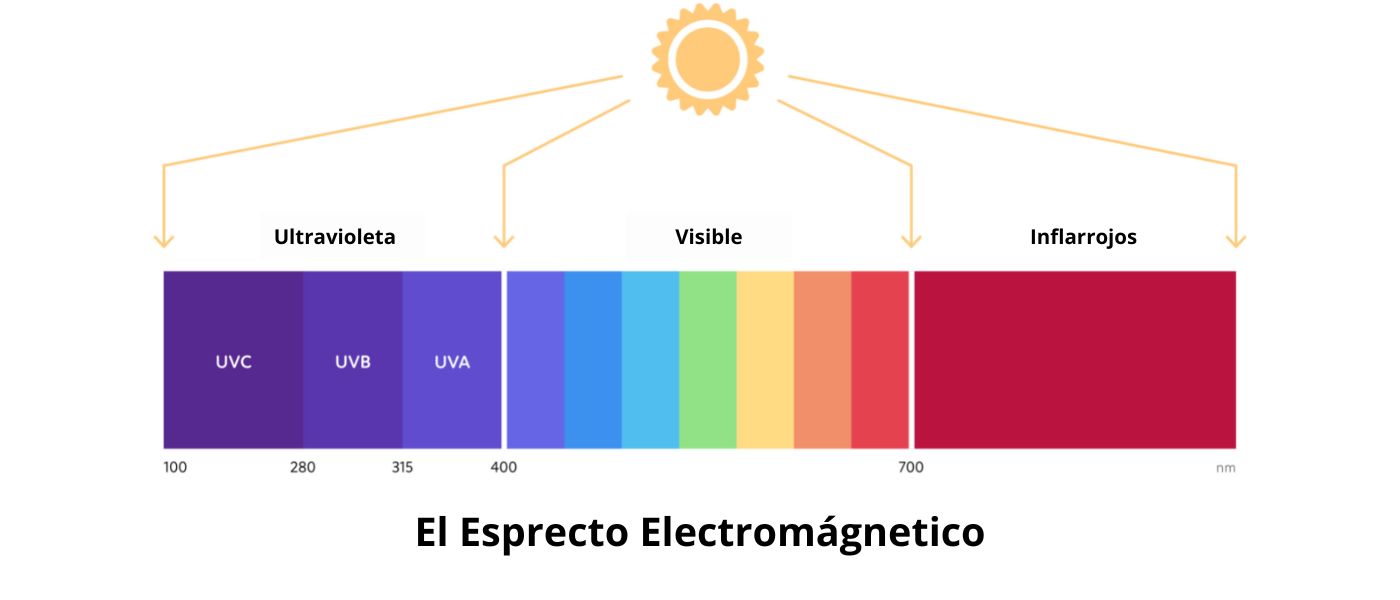
All about radiant energy
All about radiant energy
Clean, sustainable, and limitless energy from sunlight
Clean, sustainable, and limitless energy from sunlight
Radiant energy, from electromagnetic waves such as the sun’s rays, is a renewable and non-polluting energy source with infinite uses and applications. Read more to learn how it works.


What is radiant energy?
What is radiant energy?
Radiant energy, also known as electromagnetic radiation or energy, is found in electromagnetic waves such as visible light, ultraviolet rays, infrared rays, gamma rays, and radio waves, for example.
Solar energy and radiant energy are two closely related concepts, whose history has advanced in parallel. Electromagnetic waves from the sun are the greatest source of natural radiant energy used to generate electricity through thermal collectors or photovoltaic panels, among other applications.
The study of electromagnetic energy from sunlight and its possible applications dates back to ancient Greece, although the term "radiant energy" didn't appear until the Modern Age. Experiments by scientists such as Charles Fritts, inventor of the first solar cell; Nikola Tesla; and Heinrich Hertz, who discovered radio waves, were key for its development.
Sun rays are the main natural source of radiant energy, along with light from the stars. This type of energy is fundamental in basic processes of organic life, such as in photosynthesis. But it is also present in everyday items such as light bulbs, microwaves, and radiodiagnostic medical equipment.
Where does radiant energy come from?
Where does radiant energy come from?
Radiant energy is a type of kinetic energy transmitted through elementary particles called photons. When the electromagnetic waves hit an object, its interaction with these photons causes the molecules on the surface to speed up, thus modifying their properties and generating heat and other forms of energy.
As we mentioned before, electromagnetic radiation from natural and inexhaustible sun rays is the main source of radiant energy used today. However, this type of primary energy is also present in any heat source, such as the flames of a fire. Ultraviolet and infrared radiation and radio waves also produce radiant energy.
The intensity of radiant energy depends on the amount of photons that remain on the surface where the electromagnetic waves have hit. Additionally, its color is related to the frequency and length of the wave.
As we can see in the image below, there are different types of radiant energy on the spectrum perceptible to the human eye, according to their electromagnetic radiation:
- Visible light has an electromagnetic radiation with a very small wave length: between 380 and 760 nm.
- Infrared light has wave lengths of more than 760 nm.
- And ultraviolet waves can range from 4 to 400 nm.

Characteristics of radiant energy
Characteristics of radiant energy
- Radiant energy does not require a medium to travel through; it can travel through a vacuum.
- The photons through which the radiant energy is transmitted are constantly in motion and travel in straight lines at a constant speed: 300,000 kilometers per second, known as "the speed of light".
- When the photons interact with the material, a set amount of energy is produced.
- Another characteristic of radiant energy is that it is a type of energy that cannot penetrate the material but can be absorbed, transmitted, and reflected.
- Radiant energy is a source of infinite, renewable, and non-polluting energy, so it is an ideal option for making progress in the ecological transition.
- Since it doesn't need a physical medium for transmission, the use of radiant energy is an excellent alternative for supplying electricity to areas where the conventional power grid doesn't reach, such as isolated towns or other areas difficult to access given their terrain.
- Capture systems for radiant energy are very easy to keep up, although currently they are only able to produce energy at a low scale.
- Even though the cost of radiant energy continues to be high, thanks to technological advances, we are able to produce it much more efficiently, making it a key source of energy to be used in future developments.
Types of radiant energy
Types of radiant energy
Uses and examples of radiant energy
Uses and examples of radiant energy
Now that you know how it works, would you like to learn some of the practical applications of radiant energy? Radiant lighting or heating, for example, are two household uses based on energy generated from this electromagnetic radiation. Radiant energy also has important applications within the medical field, with machines that employ X-rays to diagnose illnesses or to perform radiation therapy.
Furthermore, harnessing radiant energy is key for today's development of the many technologies related to solar energy. Although the common final goal is to generate electricity, the process to produce it is different depending on the types of solar panels used. The collectors used in solar thermal installations transform electromagnetic radiation from the sun into thermal energy from which electricity is produced by means of a conventional thermodynamic cycle. In the case of photovoltaic solar panels, however, the solar cells that make them up are able to directly convert solar light into an electric current.


